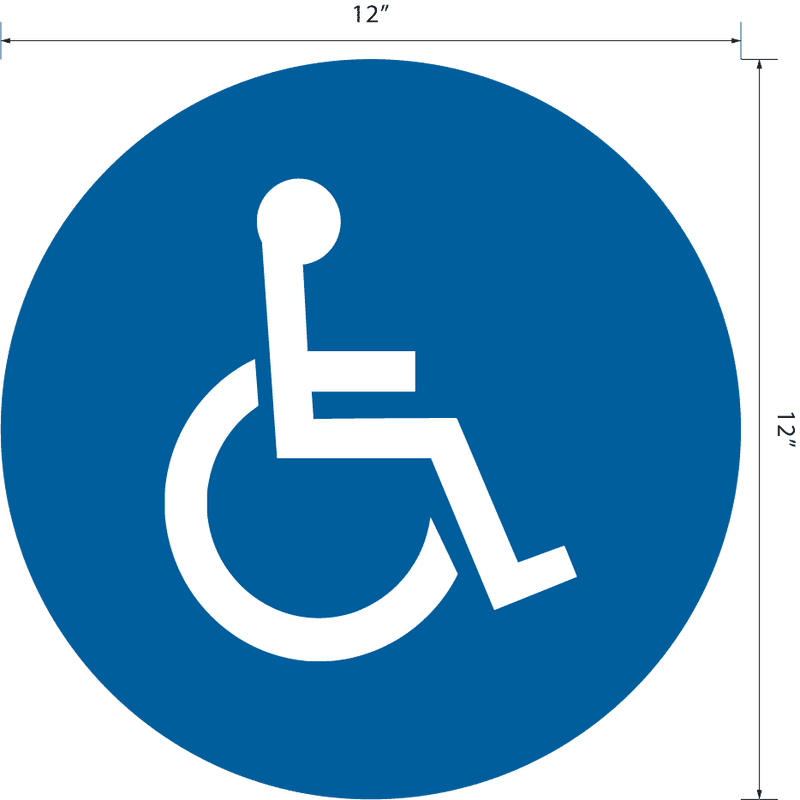Check out the Significance of ADA Signs in Public Spaces
Check out the Significance of ADA Signs in Public Spaces
Blog Article
Exploring the Trick Attributes of ADA Indicators for Boosted Availability
In the realm of access, ADA indications offer as silent yet powerful allies, making certain that areas are inclusive and accessible for individuals with specials needs. By incorporating Braille and tactile aspects, these signs break obstacles for the aesthetically impaired, while high-contrast color plans and clear font styles provide to varied visual demands.
Significance of ADA Conformity
Ensuring compliance with the Americans with Disabilities Act (ADA) is critical for cultivating inclusivity and equivalent accessibility in public spaces and work environments. The ADA, established in 1990, mandates that all public facilities, employers, and transportation solutions suit people with disabilities, ensuring they take pleasure in the very same civil liberties and opportunities as others. Compliance with ADA requirements not just satisfies lawful commitments yet also enhances an organization's credibility by showing its dedication to variety and inclusivity.
Among the crucial facets of ADA conformity is the execution of accessible signage. ADA signs are designed to ensure that individuals with disabilities can easily navigate through areas and buildings. These signs should comply with particular guidelines regarding dimension, typeface, shade contrast, and placement to guarantee visibility and readability for all. Effectively applied ADA signs assists get rid of barriers that individuals with handicaps usually come across, consequently promoting their independence and self-confidence (ADA Signs).
Additionally, adhering to ADA regulations can minimize the danger of prospective fines and lawful effects. Organizations that stop working to follow ADA standards may face fines or suits, which can be both financially challenging and harmful to their public picture. Hence, ADA compliance is indispensable to promoting a fair atmosphere for every person.
Braille and Tactile Elements
The incorporation of Braille and tactile aspects right into ADA signage personifies the concepts of accessibility and inclusivity. It is generally put under the corresponding message on signs to ensure that individuals can access the information without visual assistance.
Responsive elements extend beyond Braille and consist of raised signs and characters. These parts are created to be discernible by touch, permitting people to recognize area numbers, bathrooms, exits, and various other crucial areas. The ADA sets details standards regarding the size, spacing, and positioning of these responsive aspects to optimize readability and ensure uniformity across different settings.

High-Contrast Color Pattern
High-contrast color design play an essential duty in enhancing the visibility and readability of ADA signage for people with visual impairments. These systems are crucial as they make best use of the difference in light reflectance in between text and background, making sure that indications are conveniently noticeable, even from a range. The Americans with Disabilities Act (ADA) mandates the use of specific shade contrasts to accommodate those with restricted vision, making it an essential facet of compliance.
The efficiency of high-contrast colors hinges on their ability to stick out in various illumination problems, including dimly lit settings and areas with glare. Commonly, dark text on a light history or light message on a dark background is utilized to attain optimal contrast. For circumstances, black message on a white or yellow history gives a stark aesthetic distinction that aids in quick recognition and understanding.

Legible Fonts and Text Size
When taking into consideration the style of ADA signs, the option of clear fonts and appropriate message dimension can not be overemphasized. The Americans with Disabilities Act (ADA) mandates that font styles must be sans-serif and not italic, oblique, manuscript, extremely ornamental, or of unusual form.
The dimension of the message likewise plays a critical role in access. According to ADA standards, the minimum sites message elevation ought to be 5/8 inch, and it ought to increase proportionally with watching distance. This is especially important in public rooms where signage requirements to be read quickly and properly. Consistency in message dimension contributes to a natural visual experience, aiding people in navigating environments efficiently.
In addition, spacing between letters and lines is important to legibility. Ample spacing avoids personalities from appearing crowded, boosting readability. By adhering to these requirements, developers can substantially improve availability, ensuring that signage offers its intended function for all people, no matter their visual capacities.
Effective Placement Approaches
Strategic placement of ADA signs is essential for making the most of ease of access and guaranteeing compliance with legal standards. ADA standards stipulate that signs should be mounted at an elevation in between 48 to 60 inches from the ground to ensure they are within the line of sight for both standing and seated individuals.
Additionally, signs have to be put surrounding to the latch side of doors to enable simple recognition prior to access. This positioning aids individuals locate rooms and areas without blockage. In cases where there is no door, signs should be review located on the nearest surrounding wall. Uniformity in sign placement throughout a facility boosts predictability, decreasing complication and improving general individual experience.

Final Thought
ADA signs play an essential duty in advertising accessibility by integrating functions that address the demands of people with specials needs. Including Braille and responsive aspects guarantees crucial details comes to the aesthetically impaired, while high-contrast shade schemes and legible sans-serif typefaces improve exposure across various lights conditions. Reliable positioning methods, such as proper placing heights and calculated locations, additionally help with navigating. These elements jointly promote an inclusive setting, highlighting the importance of ADA conformity in guaranteeing equal accessibility for all.
In the world of access, ADA indications serve as quiet yet effective allies, guaranteeing that rooms are inclusive and navigable for individuals with handicaps. The ADA, established in 1990, mandates that all public centers, employers, and transport solutions accommodate people with impairments, ensuring they enjoy the same rights and possibilities as others. ADA Signs. ADA signs are designed to guarantee that individuals with impairments can conveniently navigate through structures and spaces. ADA guidelines state that indicators need to be placed at an elevation in between 48 to 60 inches from the ground to guarantee they are within the line of sight for both standing and seated people.ADA indications play an essential role in advertising ease of access by integrating attributes that deal with the needs of people with handicaps
Report this page